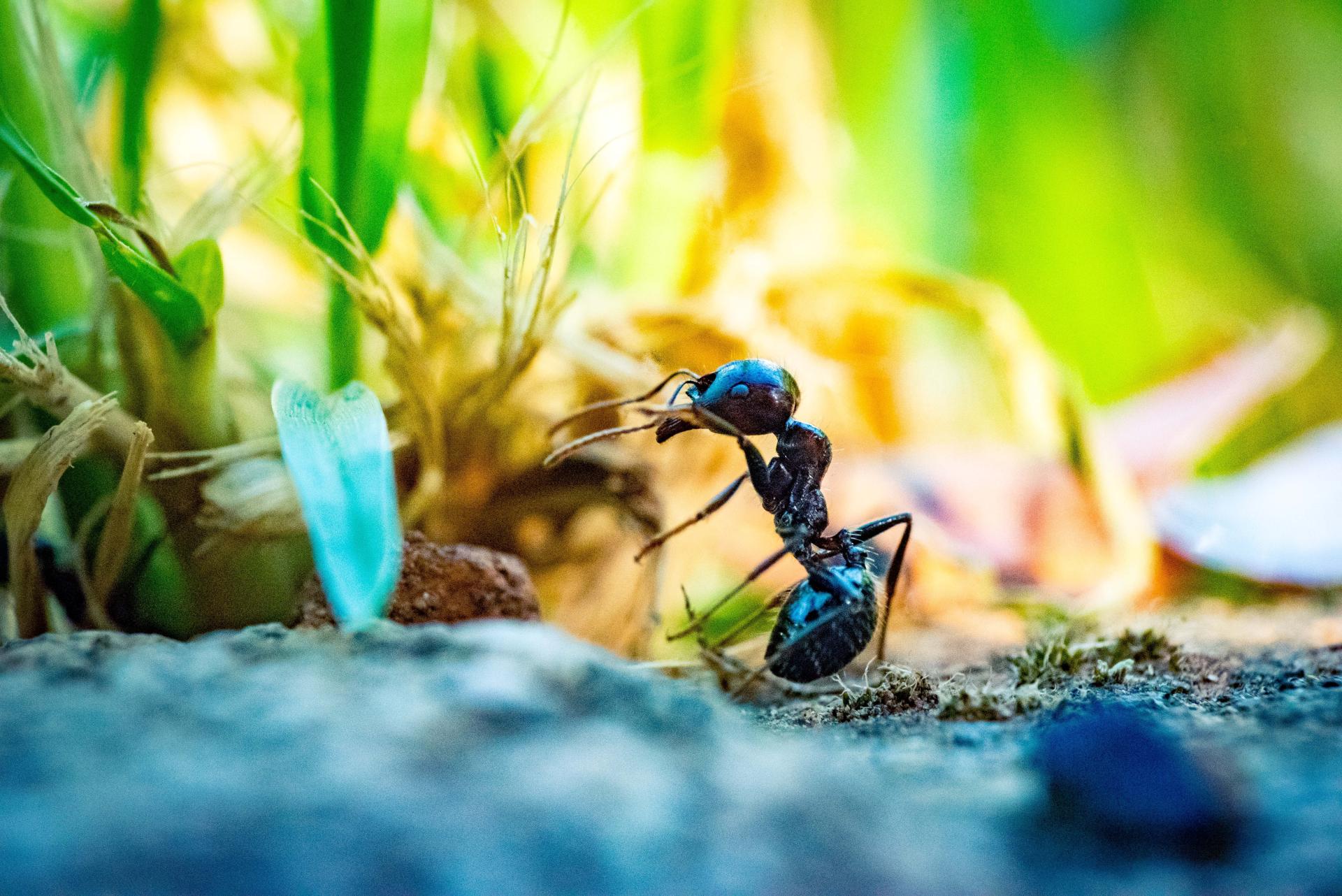You are here
Be A Better Gardener: Insect of the Day
Be A Better Gardener: Insect of the Day
by Thomas Christopher
Every week or so I get together with my neighbor Brian Stewart to savor a cappuccino on his backyard terrace. Brian’s conversation is as good as his coffee, although our talk is commonly interrupted whenever he spots an insect. Then he rushes to get his camera and snap a photo.
Brian has been pursuing this photographic passion since 2007. It grew out of his participation as a volunteer in a local bioblitz. A bioblitz is, in its way, a snapshot too, a snapshot of local biodiversity. Biologists and naturalists meet in some communities and identify and record every plant or animal they can find within a given period of time, typically 24 hours. This provides a quick insight into the richness of the local ecosystem. In his bioblitz, Brian was paired with a coleopterist, a biologist who specializes in the study of beetles.
Brian came home from this adventure determined to begin an insect collection of his own. His wife Jane persuaded Brian not to take the traditional route of killing his finds and pinning them to a board. Instead, he decided to collect photographic portraits, in what he dubbed his “Insect of the Day” project.
Brian began his hunt on his own quarter-acre suburban property. He thought that he would soon exhaust the diversity there and have to move on to broader horizons. In fact, 16 years later, he’s still prowling his own backyard.
This property has a couple of advantages in terms of insect diversity. It abuts a small nature preserve with a stream and a pond that supports many insects. Brian has turned his own yard into good habitat, too. In front of the house is a small but densely planted decorative garden of largely exotic plants, a vegetable garden in a pattern of raised beds, and along the front yard’s southern border is a living fence of espaliered fruit trees. Behind the house is the majority of the property, and Brian has rewilded it with a wide range of native shrubs, trees, and perennials. That is an irresistible attraction for native insects in search of food. Herbivorous insects come to graze on the leaves with which they co-evolved, and predacious insects follow to feed on the grazers.
I interviewed Brian in 2019 for the Berkshire Botanical Garden’s “Growing Greener” podcast, at which time he had photographed some 400 different species of insects. This summer he told me that the count stood at 725 and that he still finds new types almost every time he sorties with his camera and macro lens.
What keeps Brian dedicated to his project is not just the diversity or the impressive numbers. He is fascinated by the vivid colors and extraordinary adaptations he finds. One of the most striking he has shared with me is the giant ichneumon wasp he found on a log. These wasps, long, black with yellow decorations and delicate articulation, are parasites. The female (which is what he showed me) advances along the bark, tapping with her antennae like a dowser to locate a buried wood wasp larva. Then she inserts the long, flexible ovipositor emerging from her rear into the bark, drilling down as much as half an inch to pierce the hidden larva. The Ichneumon then deposits a single egg. When the egg hatches, the emergent Ichneumon larva feeds on its host, gradually consuming it, until the young Ichneumon is ready to emerge.
It has been many years since, as a gardener, I lost my hostility toward insects. Whereas once I thought them all a threat and reached reflexively for the insecticide whenever I saw them on my plants, I now know that they are essential to the ecosystem. They pollinate flowers, helping to keep the vegetable garden fruitful, and enabling the seed production on which the next generation of wildflowers depends. Equally important is the food they provide for birds and other wildlife.
What I didn’t fully appreciate, however, until Brian began sharing his photographs with me, was the richness they bring to the garden. Learn to look more closely when you are out among your beds, and you will find worlds of insects, all busy with their tasks of finding food, hiding from predators or finding prey, attracting mates, and reproducing. They are fascinating, beautiful in their own way, and in their numbers a potent reminder of the limited role we megafauna play in making our gardens work.
Be-a-Better-Gardener is a community service of Berkshire Botanical Garden, located in Stockbridge, Mass. Its mission, to provide knowledge of gardening and the environment through a diverse range of classes and programs, informs and inspires thousands of students and visitors each year. Thomas Christopher is a volunteer at Berkshire Botanical Garden and is the author or co-author of more than a dozen books, including Nature into Art and The Gardens of Wave Hill (Timber Press, 2019). He is the 2021 Garden Club of America's National Medalist for Literature, a distinction reserved to recognize those who have left a profound and lasting impact on issues that are most important to the GCA. Christopher’s companion broadcast to this column, Growing Greener, streams on WESUFM.org, Pacifica Radio and NPR and is available at berkshirebotanical.org/growinggreener.
Help Our Garden Grow!
Your donation helps us to educate and inspire visitors of all ages on the art and science of gardening and the preservation of our environment.
All donations are 100 percent tax deductible.


